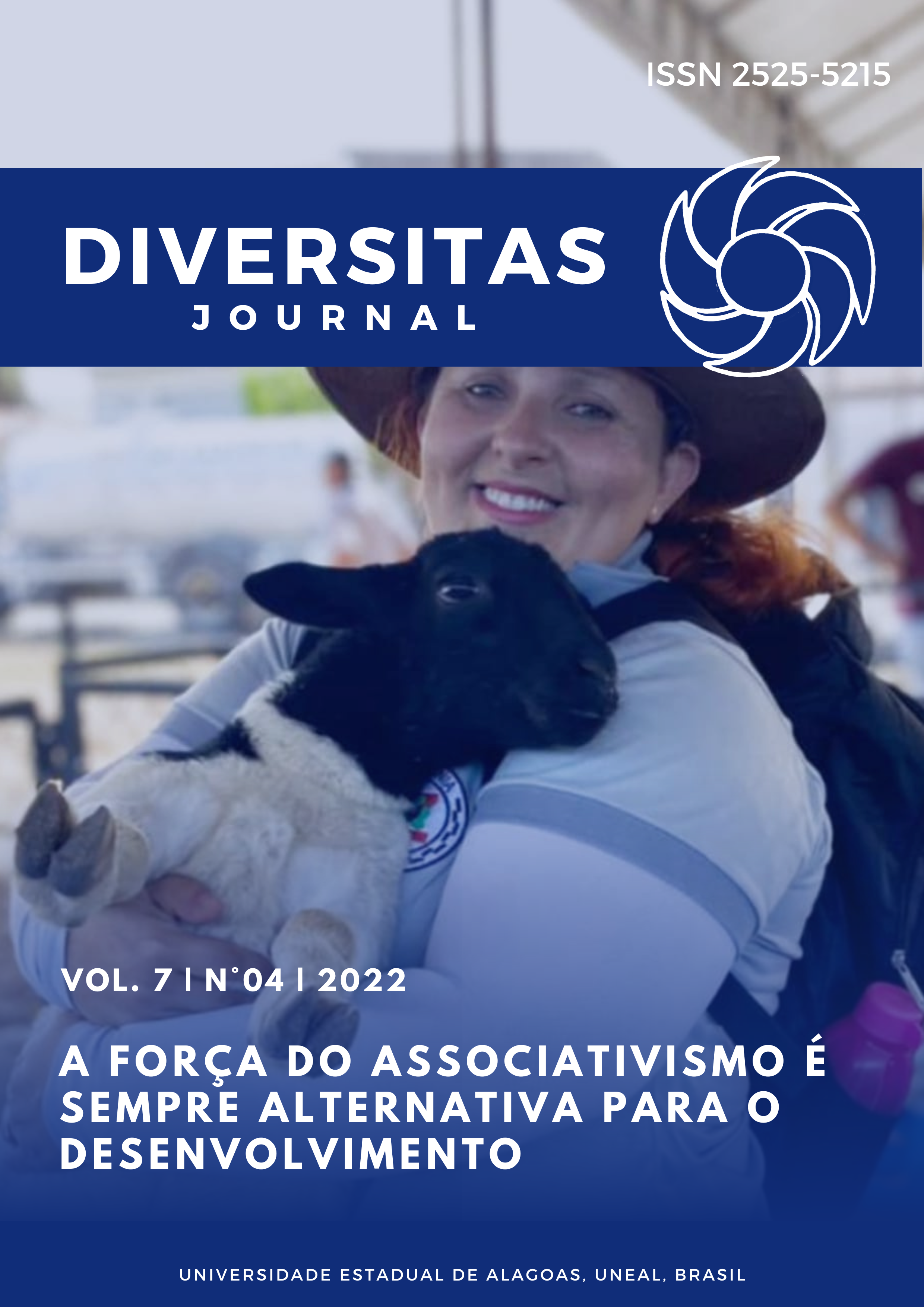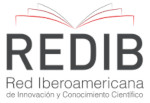Biotechnological Potential of Fungi From the Brazilian Amazon: A Systematic Review
DOI:
https://doi.org/10.48017/dj.v7i4.2104Keywords:
Fungal metabolites, biotechnological applications, potential.Abstract
The Amazon Biome is known as the greatest biological diversity and forest richness of the planet, constitutes a source of great value for the search of new enzymatic extracts to be explored for biotechnological application. In this context, fungi are used in food production, in the pharmaceutical industry, in the biodegradation process, in the biological treatment of effluents, they act in the enzymatic activity, of industrial interest and biotransformation, they are also of great agricultural and ecological importance. Thus, the present work aimed to perform a systematic review on fungal biotechnology in the Brazilian Amazon, presenting works developed in the region, noting the period of inclusion in the last 10 years (2010-2020). It was verified the publication of 31 works of bibliographic productions on biotechnological applications. The productions on the theme of fungal biotechnology were infrequently comprehensive in the year 2010 until the year 2013. It was found that there was a following growth of stability of the theme's incidence in publications in the subsequent years, especially in the year 2017 until the year 2020. Based on the study conducted, it was verified the importance of different works that address the study of Biotechnology to obtain various substances through the manipulation of fungi, in order to obtain new technologies for the benefit of society and importance to the environment.
References
ADRIO, J. L. ARNOLD, L. D. "Fungal biotechnology." International Microbiology. v. 6, n. 3, p. 191-199, 2003.
ABREU, J. A. S.; ROVIDA, A. F. S.; PAMPHILE, J. A. Fungos de Interesse: Aplicações Biotecnológicas. Universidade Estadual de Maringá – UEM. Revista UNINGÁ. v. 21, n. 1, p. 55-59, 2015.
ANDRADE, O. F.; NUNES, M. DA SILVA; TEIXEIRA, J. S. M.; OLIVEIRA, M. M.; BERBARA, R. L. L.; SARAIVA V. B. Fungos micorrízicos arbusculares (FMAs) em uma formação vegetal de restinga: ecologia e potencial para micorrizorremediação de hidrocarboneto do petróleo. Vértices, Campos dos Goytacazes/RJ, v.17, n.3, p. 7-33, 2015.
BAPTISTA, S. G., CUNHA M. Estudo de Usuarios; Visao Global dos Metodos de Coleta de Dados. Disponível em: http://www.scielo.br/pdf/pci/v12n2/v12n2a11.pdf. Acesso em 15 mai 2021.
BECKER, B. K. Geopolítica da Amazônia. Estudos Avançados, São Paulo, v. 53, n. 19, p. 71-86, 2005. Bimestral. Disponível em: <https://www.scielo.br/ pdf/ea/v19n53/24081.pdf/> Acesso em 07 ago 2021. CANHOS, V. P.; MANFIO, G. P. Recursos Microbiológicos para Biotecnologia. Campinas, 2010.
CAVALCANTE, F. S. CAMPOS, M. C. C. LIMA, J. P. S. Diversidade de Fungos da Família Marasmiaceae no Sudoeste Da Amazônia. Revista EDUCAmazônia. v. 13, n. 2, 61-79, 2021.
CAPOBIANCO, J. P. R.; VERISSÍMO, A.; MOREIRA, A.; SAWYER, D.; SANTOS, I. P.; PINTO, L. P. Biodiversidade na Amazônia brasileira: avaliação e ações prioritárias para a conservação, uso sustentável e repartição de benefícios. Estação Liberdade: Instituto Sócio ambiental, São Paulo, 2017.
CRUZ, C. B. N. Seleção dos clones produtores de amilases e proteases presentes na biblioteca Metanogênica de Terra Preta de Índio. 2010. Dissertação (Mestrado em Diversidade Biológica). Universidade Federal do amazonas – UFAM, 2010.
DANNIELLE, N.; SOUSA, C.; RIBEIRO, M. B. Prospecção tecnológica da utilização da lipase obtida por fermentação de leveduras. Prospection technology use of lipase obtained by yeast fermentation. v. 6, p. 3329–3342, 2016.
DA SILVA, L. L.; MOREIRA, I. C.; SILVA, T. M.; DA SILVA, L. B.; SANTOS, T. A. A.; DE OLIVEIRA, L. M.; DE SOUZA, D. F.; BRITO, A. O.; DOS SANTOS, S. X. Bioprospecção de Fungos de um Fragmento de Cerrado no Brasil Central para Aplicações Biotecnológicas. Fronteiras. Journal of Social, Technological and Environmental Scienc, v. 7, n. 1, p. 288–305, 2018.
DIAS, R. F; FILHO, C. A. A. C. Bioeconomia no Brasil e no Mundo: Panorama Atual e Perspectivas. Revista Virtual de Química, v.9, n.1, p. 1-21, 2017.
DURAZZINI, A. M. S. Fungos micorrízicos arbusculares em solos sob diferentes cultivos. Revista Agrogeoambiental. Inconfidentes, Minas Gerais, v. 1, n. 1, p. 1-7, 2009.
FONSECA, T. R. B. Avaliação do Crescimento, Produção de Basidioma e Determinação da Atividade Proteolítica Em Resíduos Agroindustriais. 2013. Dissertação (Mestrado em Biotecnologia). Universidade Federal do Amazonas (UFAM) - Instituto de Ciências Biológicas, Manaus, 2013.
GIROTTO, M. J.; AQUINO, L. F. B.; PEREZ, R. B., SACCO, M. F., NEVES, M. F.; SACCO, S. R. O Uso De Fungos Nematófagos No Controle Biológico De Nematóides Parasitas: Revisão De Literatura. Revista Científica Eletônica de Medicina Veterinária. v. 6, n. 10 p. 1-7, 2008.
GONÇALVES, B.; BASTOS, E.; HANNA, S. Prospecção Tecnológica de Fungos Endófitos e Aplicações na Indústria Farmacêutica. p. 56–67, 2017.
GUSMÃO, A. O. M.; SILVA, A. R.; MEDEIROS, M. O. A Biotecnologia e os Avanços da Sociedade. Biodiversidade. v.16, N1, p. 135, 2017.
GRAMINHA, E. B. N.; MONTEIRO, A. C.; SILVA, H. C.; OLIVEIRA, G. P.; COSTA, A. J. Controle de nematóides parasitos gastrintestinais por Arthrobotrys musiformis em ovinos naturalmente infestados mantidos em pastagens. Pesq. Agropec, v.40, n.9, p. 927-933, 2005.
GRUMACH, A. S.; FERRARONI, N. R. O Papel da Penicilina Na Medicina Moderna. J bras Doenças Sex Transm. v. 18 n. 1, p. 7-13, 2006.
IBGE (Instituto Brasileiro de Geografia e Estatística). Cidades. Disponível em <https://cidades.ibge.gov.br/brasil/am/atalaia-do-norte/panorama> Acesso em 25 Out 2021.
IKEDA, M. K, JENSON H. B. Evaluation and treatment of congenital syphilis. J Pediatr; v. 117, p. 843-52, 1990.
INGRAHAM, N. R. The value of penicillin alone in the prevention and treatment of congenital syphilis. Acta Derm Venereol Suppl.; v. 24 n. 12. p. 60-88, 1951.
KATHI, S.; KHAN, A. B. Phytoremediation approaches to PAH contaminated soil. Indian Journal of Science and Technology, v. 4, n. 1, 2011.
LIMA, N.; MOTA, M. Biotecnologia: fundamentos e aplicações. Portugal: Lidel, 2003.
MAIA L. C.; PEIXOTO, A. L.; CANHOS, D. Instituto Nacional de Ciência e Tecnologia - INCT Herbário Virtual da Flora e dos Fungos: missão e funcionamento. In: VI Congresso Brasileiro De Micologia. Brasília, p. 587-594, 2010.
MASCARIN, G. M.; QUINTELA, E. D. Técnica de Produção do Fungo Entomopatogênico Metarhizium anisopliae para Uso em Controle Biológico. Embrapa Arroz e Feijão, 21 ed., p. 17, Santo Antônio de Goiás, 2013.
MANZUR, A.; SAPNA, K.; REKHA, M.; BHAT, S. G.; CHANDRASEKARAN, M.; ELYAS, K. Trypsin Inhibitor from Edible Mushroom Pleurotus floridanus Active against Proteases of Microbial Origin. Applied Biochemistry and Biotechnology. v. 173, p. 167–178, 2014.
MARKONI, M.A.; LAKATOS, E.M. Fundamentos de metodologia científica. São Paulo: Atlas, 7ed. 2010.
MISHRA, Y. SINGH, A.; BATRA, A.; SHARMA, M. M. Understanding the Biodiversity and Biological Applications of Endophytic Fungi. A Review. J. Microbial. Biochem. Technol, vol. 8, n. 4, 2014.
MOTA, M. A.; CAMPOS, A. K.; ARAÚJO, J. V. Controle biológico de helmintos parasitos de animais: estágio atual e perspectivas futuras. Pesq. Vet, v.23, n.3, p. 93-100, 2003.
MULLICK, S, WATSON-JONES D, BEKSINSKA M, MABEY D. Sexually transmitted infections in pregnancy: prevalence, impact on pregnancy outcomes, and approach to treatment in developing countries. Sex Transm Infect.v. 81n. 4, p. 294-302, 2005.
MURO, L. F. F.; AZEVEDO, F. F.; MARQUES, M. E. O.; BORALLI, I. C.; BOTTURA, C. R. P.; NEGRI, D.; PEREIRA, D. M. Farmacocinética e dinâmica da penicilina. Revista Científica Eletrônica de Medicina Veterinária, v. 7, n. 12, p. 1-5, 2009.
OLIVEIRA, J. C. Tópicos em Micologia Médica. 230 p. Rio de Janeiro, 2014.
ORLANDELLI, R. C.; SPECIAN, V.; FELBER, A. C.; PAMPHILE, J. A. Enzimas de interesse industrial: produção por fungos e aplicações. SaBios-Revista de Saúde e Biologia, v.7 n. 3 p. 97-109, 2012.
PAMPHILE, J. A. COSTA A. T.; ROSSETO, P.; POLONIO, J. C.; PEREIRA5, J. O.; AZEVEDO, J. L. Aplicações Biotecnológicas de Metabólitos Secundários Extraídos de Fungos Endofíticos: O Caso do Colletotrichum Sp. Revista Uningá, v.53, n.1, p.113-119, Jul - Set 2017.
PATRÍCIO, A. S.; MENDOZA A. Y. G.; CAVALCANTE, F. S.; SANTOS, V. S.; LIMA, R. A. Levantamento de Macrofungos na Reserva Natural de Palmari, Atalaia do Norte, Amazonas, Brasil. Revista Biodiversidade, v.20, n.3, p. 91, 2021.
PEREIRA, J. O.; SOUZA, A. Q. L.; SOUZA, A. D. L.; FRANÇA, S. C.; OLIVEIRA, L. A. Overview on Biodiversity, Chemistry, and Biotechnological Potencial of Microorganisms from the Brazilizan Amazon. In: AZEVEDO, J. L.; QUECINE, M. C. Diversity and Benefits of Microorganisms from the Tropics. Springer Internaticional Publishing AG, 2017.
PEIXOTO, A. L.; BARBOSA, M. R.V.; CANHOS, D. A. L.; MAIA, L. C. Coleções Botânicas: Objetos e Dados para a Ciência. In: GRANATO, M; RANGEL, M (Orgs). Cultura material e património da Ciência e Tecnologia. Museu da Astronomia e Ciência Afins. Rio de Janeiro, 2009.
RIVAS, P. E. C. Influencia de la cobertura vegetal sobre la diversidad y estructura de lãs comunidades de hongos micorrizicos y sus efectos em la estabilización de suelos degradados. Tese (Doutorado) - C.S.I.C. da Universidade de Granada. 2006. DOI:10481/1008. Disponível em: <http://digibug.ugr.es/bitstream/10481 /1008/1/16154952.pdf >. Acesso em 12 mar 2021.
ROMANO, A. E. E.; MARINHO S. C. O. Universidade e Inovação: A Importância das Universidades como Potenciais Centros de Difusão do Conhecimento. In: PORTO J., GILSON, F. MARINHO, S. C. O. (organizadores). Universidade e inovação: Olhares sobre Propriedade Intelectual e Transferência de Tecnologia. Editora EdUFT, p. 13-31. Palmas, 2021.
ROLIM, C. F. C.; SERRA, M. A. Universidade e desenvolvimento regional: o apoio das instituições de ensino superior ao desenvolvimento regional. Curitiba: Juruá, 2010.
SANTOS, F. S. MAGALHÃES, M. O. L.; MAZUR, N.; SOBRINHO, N. M. B. A. Chemical amendment and phytostabilization of an industrial residue contaminated with Zn and Cd. Sci. Agric., v.64, n.5, p. 506-512, 2007.
SILVA, C. J. A.; MALTA, D. J. N. A IMPORTÂNCIA DOS FUNGOS NA BIOTECNOLOGIA. Ciências biológicas e da saúde. Recife, v. 2, n. 3 p. 49-66, 2016.
SOUSA, K. A.; SANTOYO, A. H.; JUNIOR, W. F. R.; MATOS, M. R.; SILVA, A. C. Bioeconomia na Amazônia: uma análise dos segmentos de fitoterápicos & fitocosméticos, sob a perspectiva da inovação. Revista: Fronteiras: Journal of Social, Technological and Environmental Science, v.5, n.3, p. 151-171, 2016.
STROBEL, G. The strory of mycodiesel. Curreat Opinion in Microbiology, v.19, n. 1, p. 52-28, 2014.
RAJASEKARAN, R. "Microbial biotechnology Rapid Advances in an area of massive impact." Microbial biotechnology Rapid Advances in an area of massive impact, v. 7, n. 05 p. 19-25, 2008
NIGAM, P. S. "Production of bioactive secondary metabolites."Biotechnology for Agro-Industrial Residues Utilisation. Springer Netherlands. p. 129-45. 2009.
TAKAHASHI, J. A.; LUCAS, E. M. F. Ocorrência e diversidade estrutural de metabólitos fúngicos com atividade antibiótica. Química Nova, v. 31, n. 7, p. 1807-1813, 2008.
YAMAGUCHI, K. K. L.; LAMARÃO, C. V.; ARANHA, E. S. P.; SOUZA, R. O. S.; OLIVEIRA, P. D. A.; VASCONCELLOS, M. C.; LIMA, E. S.; JUNIOR, V. F. V. HPLC-DAD Profile of phenolic compounds, cytotoxicity, antioxidant and anti-inflammatory activities of the amazon fruit Caryocar villosum. Quim. Nova, vol. 40, n. 5, p. 483-490, 2017.
Additional Files
Published
How to Cite
Issue
Section
License
Copyright (c) 2022 Anita Yris Garcia Mendoza, Viviane Vidal da Silva , Renato Abreu Lima , Janaína Paolucci Sales De Lima

This work is licensed under a Creative Commons Attribution 4.0 International License.
The Diversitas Journal expresses that the articles are the sole responsibility of the Authors, who are familiar with Brazilian and international legislation.
Articles are peer-reviewed and care should be taken to warn of the possible incidence of plagiarism. However, plagiarism is an indisputable action by the authors.
The violation of copyright is a crime, provided for in article 184 of the Brazilian Penal Code: “Art. 184 Violating copyright and related rights: Penalty - detention, from 3 (three) months to 1 (one) year, or fine. § 1 If the violation consists of total or partial reproduction, for the purpose of direct or indirect profit, by any means or process, of intellectual work, interpretation, performance or phonogram, without the express authorization of the author, the performer, the producer , as the case may be, or whoever represents them: Penalty - imprisonment, from 2 (two) to 4 (four) years, and a fine. ”


















